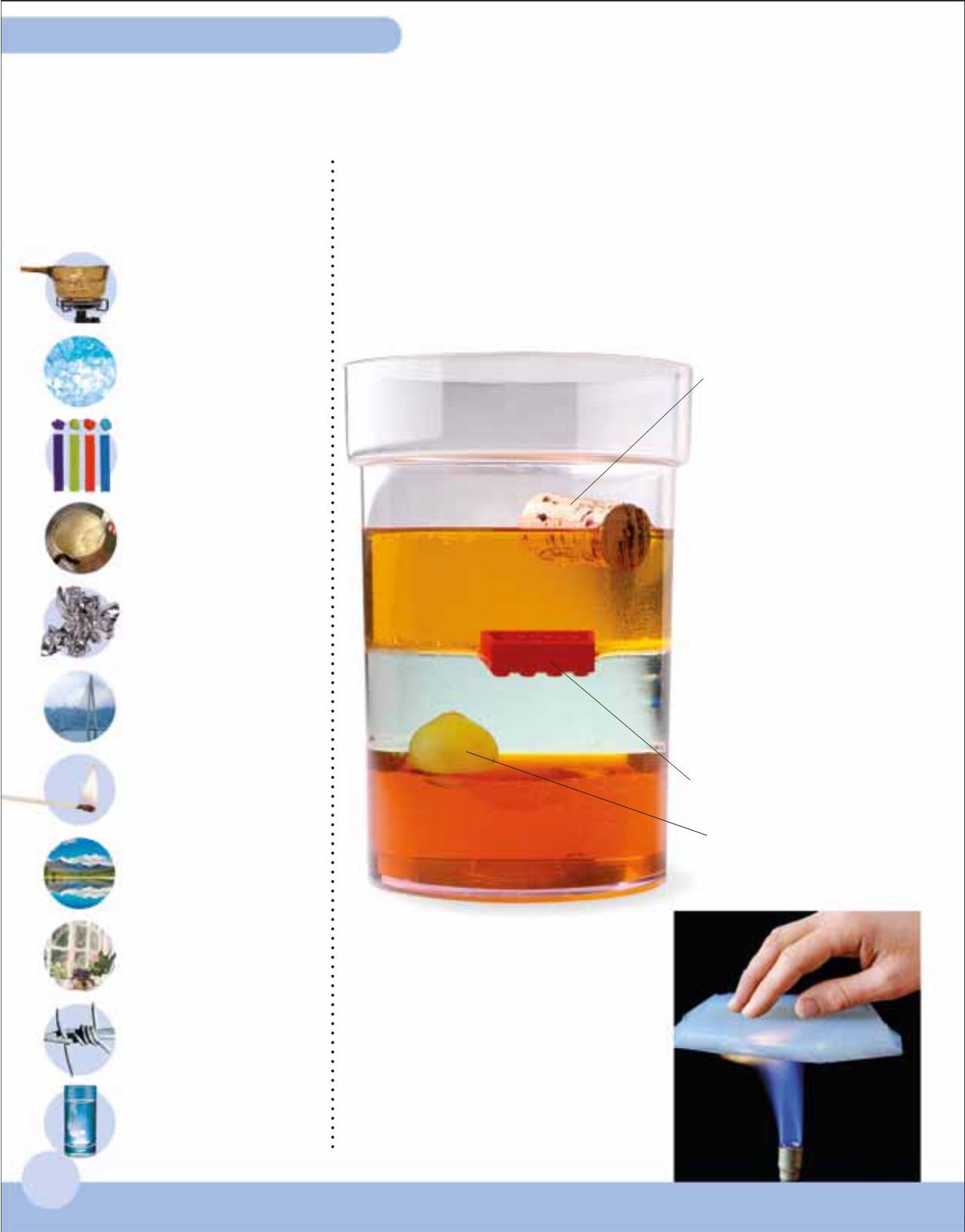
224
Some materials are hard and
brittle, while others are flexible.
Some materials are colourful, while
others are transparent. These kinds
of features are called “properties”.
Properties of matter
Does it float?
It’s easy to learn about
some properties, such
as the ability to float.
The amount of matter
in a certain volume of
an object is called its
density. Objects and
liquids float on liquids
of a higher density and
sink through liquids
of a lower density.
Is a diamond harder than quartz?
Science and technology
Freezing point
is the
temperature at which
a liquid becomes a solid.
Plasticity
is how well
a solid can be reshaped.
Conductivity
is how well
a material lets electricity
or heat travel through it.
Boiling point
is the
hottest a liquid can get
before becoming a gas.
What they are...
There are many different
properties of matter.
An onion sinks through oil and
water, but floats on syrup.
Syrup sinks below water.
A cork floats on oil.
Oil floats on water.
Tensile strength
is how
much a material can
stretch without breaking.
Flammability
is how
easily and quickly a
substance will catch fire.
Reflectivity
is how well
a material reflects light.
Water reflects well.
Malleability
is how well
a solid can be shaped
without breaking.
Flexibility
is how easily
a material can be bent.
Solubility
is how well
a substance will dissolve,
such as salt in water.
Transparency
is how
well a material will let
light pass through it.
A plastic building brick sinks
through oil but floats on water.
A good insulator
Heat cannot easily pass
through some materials.
These are known as
insulators. For example,
aerogel can completely
block the heat of a flame.
But don’t try this at home!


